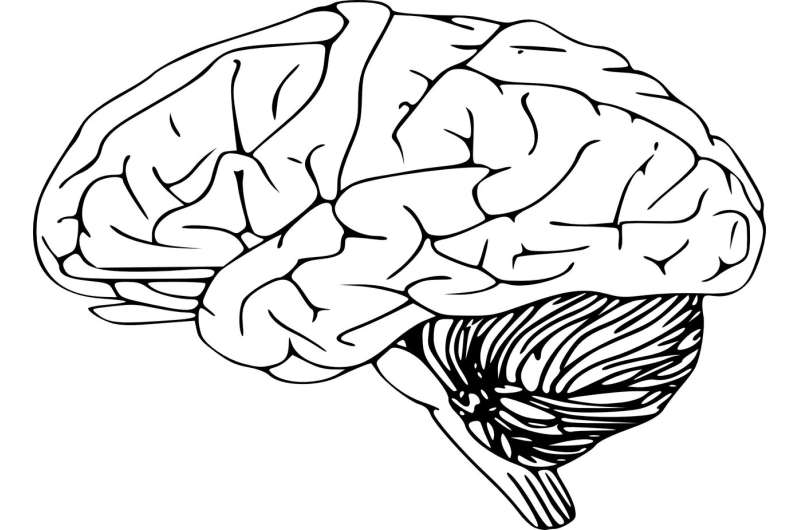Large new study reveals rates of brain abnormalities in healthy children

A large study of brain MRI scans from 11,679 nine- and ten-year-old children reviewed by UC San Francisco neuroradiologists identified potentially life-threatening conditions in 1 in 500 children, and more minor but possibly clinically significant brain abnormalities in 1 out of 25 children.
The results provide the best estimates to date of the true incidence of various structural abnormalities in the developing brain, and raise the question of whether all MRI brain imaging obtained during research studies should be reviewed by board-certified radiologists, as was done in this study, in the hopes of saving lives and alerting participants to incidental findings that ought to be medically evaluated.
One parent went public on Facebook with good news following her son’s recovery from successful surgery to remove a brain tumor that was detected by the reviewing UCSF neuroradiologists, writing, “I’m forever grateful because his participation in this study probably saved his life.”
The senior author of the study, published March 22, 2021 in JAMA Neurology, is Leo Sugrue, MD, Ph.D., associate professor in the UCSF Department of Radiology and director of the Laboratory for Precision Neuroimaging. “From examining brain MRIs in this large, demographically diverse sample of U.S. kids, now we know with good statistical reliability how common various brain abnormalities are in the general population,” Sugrue said.
Abnormalities for which additional medical evaluation was recommended included cysts that might grow to impinge on key brain structures, and developmental abnormalities of the brain’s grey matter that have been associated with seizures.
About 21 percent of kids in the study had some structural finding in the brain; however, many were simply anatomical variants, such as an unusually shaped structure, that are not known to be clinically significant. All the participating children will continue to be scanned every two years over the 10-year study, and Sugrue says some of the outstanding questions are whether any of these structural brain abnormalities statistically correlate with developmental outcomes being tracked in the study, or whether some—growing cysts, for example—may become more abnormal over time.
The results are some of the first to emerge from the ongoing nationwide Adolescent Brain Cognitive Development (ABCD) study, launched by collaborating institutes within the National Institutes of Health. The ABCD study, which has enrolled participants at 21 different research sites across the country, is the biggest U.S. long-term study of child health and brain development to date.
While the results presented in JAMA Neurology are from initial baseline MRI scans, the ambitious, overarching goal of the ABCD study is to reevaluate the same cohort of children periodically as they mature from pre-adolescence through adulthood, to determine how changing biology interacts with environment and lifestyle—variables such as involvement in sports, use of social media and video games, sleep patterns, and use of substances such as alcohol and tobacco—to influence brain development and health, including behavioral, social, and educational outcomes.
Adolescence is a time of dramatic changes in brain structure and function, Sugrue said. “The years from adolescence to early adulthood are a time of rapid social, cognitive, and emotional development, and a period when many psychiatric disorders and learning disabilities first present. Brain changes during this period are suspected to influence risk for disorders such as schizophrenia, depression, attention-deficit/hyperactivity disorder, and addiction. However, to date our understanding of those relationships has been limited by a lack of high-quality longitudinal data, a gap that the ABCD study aims to fill.”
Besides obtaining brain images, ABCD researchers are administering questionnaires and neuropsychiatric exams, taking blood and other biosamples for genetic and other studies, and even consulting geographical databases to monitor participants’ exposure to pollution and other environmental factors.
Although researchers are obtaining a variety of additional types of MRI images for the ABCD study, the results published this week in JAMA Neurology were obtained through review of structural scans obtained using state-of-the-art imaging with high-field-strength MRI scanners that allow examination of the brain at millimeter resolution.
Sugrue and UCSF neuroradiologist Yi Li, MD, the first author of the new study and assistant professor in the Department of Radiology, evaluated all the baseline structural MRI scans for the ABCD study, but Sugrue has recently recruited additional UCSF clinical neuroradiologists to assist in future analyses. UCSF is not an enrollment or exam site for the ABCD study.
Source: Read Full Article


